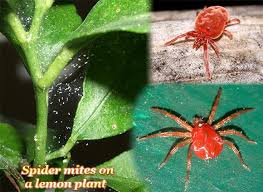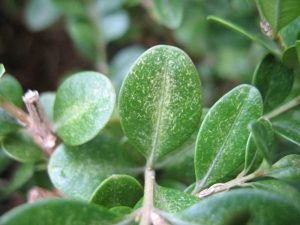How to Identify Spider Mite Damage on Plants
 Spider mites are a menace to both home gardeners as well as commercial growers. These tiny insects can wreak absolute havoc on your gardens or even a harvest. This is because a spider mite infestation is typically detected too late.
Spider mites are a menace to both home gardeners as well as commercial growers. These tiny insects can wreak absolute havoc on your gardens or even a harvest. This is because a spider mite infestation is typically detected too late.
By then, there is too much damage done and the plant is unable to recuperate. This is why it is imperative that you understand how to identify the damage done by spider mites.
What to Look For
 One of the main reasons that it is so difficult to identify spider mite damage is because it can look like a symptom that can be associated with numerous other problems. One of the first signs that your plant is suffering is that there will be tiny, light dots on the leaves.
One of the main reasons that it is so difficult to identify spider mite damage is because it can look like a symptom that can be associated with numerous other problems. One of the first signs that your plant is suffering is that there will be tiny, light dots on the leaves.
You may also notice that the leaves become bronze in color. If the infestation progresses, the leaves will turn red or yellow and eventually fall off the plant. With plants bearing fruit, it is unlikely that you will see a reduction in yield unless the plant is unable to make food anymore.
Yellowing leaves can be due to a number of reasons. To determine if spider mites are the cause, you should look at the underside of the leaf. In severe infestations, there should be webbing here. There will also be numerous eggs and mites although this can be difficult to see due to their minute size.
The best way to make sure that spider mites are involved is to get a piece of white paper or card and hold it under the infested leaf. Gently tap the leaf. If there are spider mites, they will fall onto the paper and appear as tiny, dark specks. Another option would be to get a jeweler’s loupe to be able to get a closer look at the mites.
How Spider Mites Cause Damage
A plant is greatly dependent on its ability to retain water when necessary and then allow transpiration to occur when needed. This is largely managed by the stoma present on the leaves. Spider mites pierce the topmost layer of the leaves, feeding on the cells and the liquid present inside.
In an attempt to prevent this loss of moisture, the plants close their stomata on the infected leaves. Unfortunately, this doesn’t stop the moisture loss through the holes that have already been made. After a while, the leaves get too dehydrated, resulting in leaf loss.
If the infestation continues, the plant experiences a reduction in its food-making ability. As a result, it becomes increasingly difficult for the plant to sustain itself. If the spider mites are not eradicated, the plant could end up dying completely.
As the mites are so small, it is quite easy for them to migrate from one plant to another. This can even be managed by them crawling onto your clothes and being transplanted in this manner. If you do notice spider mite damage, you should always isolate the infected plant. If the infestation is too great, you may need to get rid of the entire plant to save the nearby plants.
To learn more about vegetable gardening of various kinds, you should absolutely check out The MiniFarming Guide to Vegetable Gardening.
